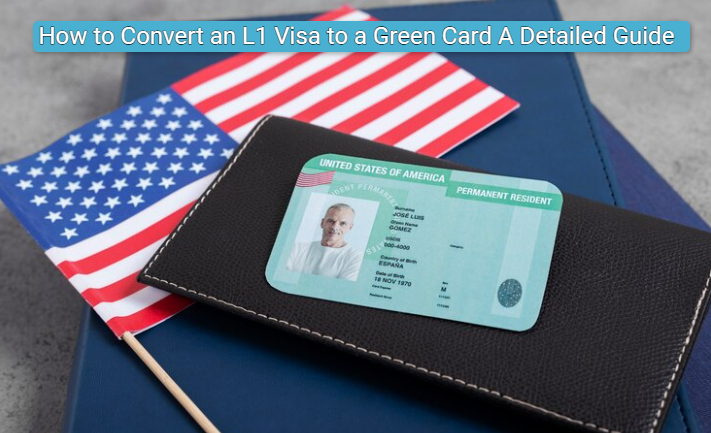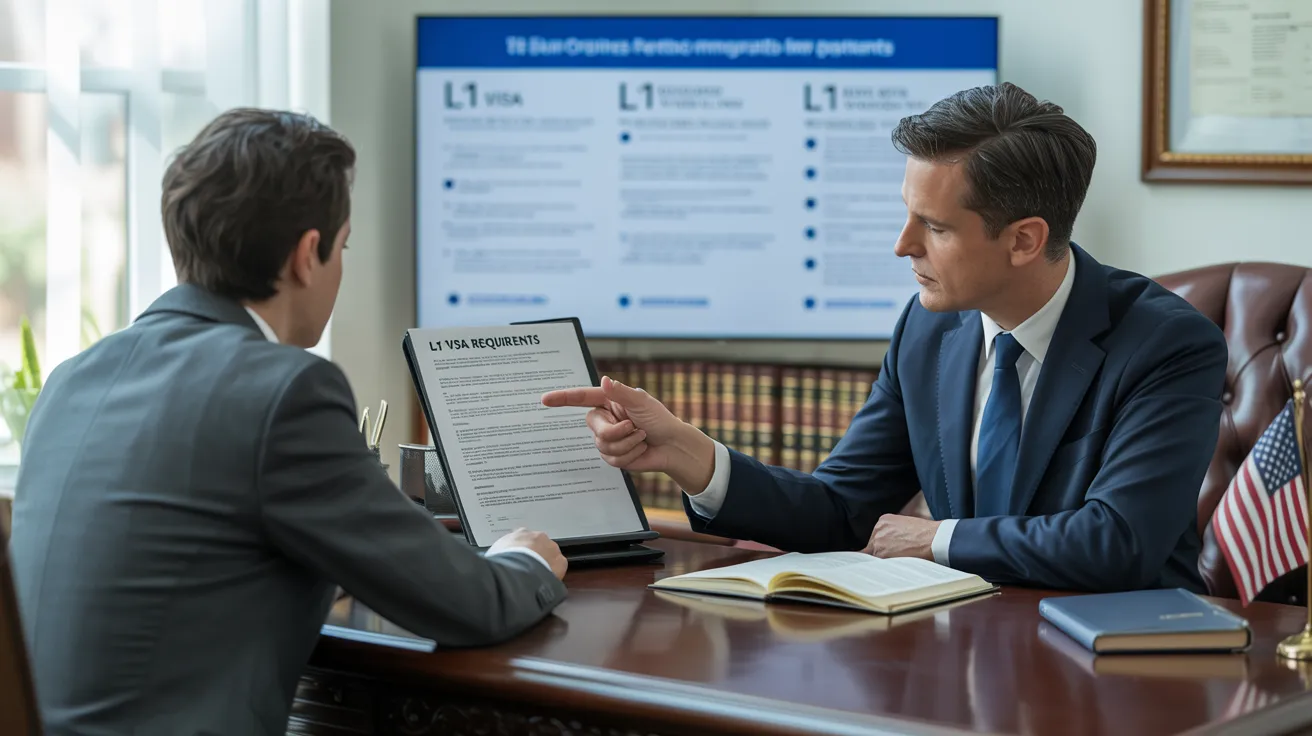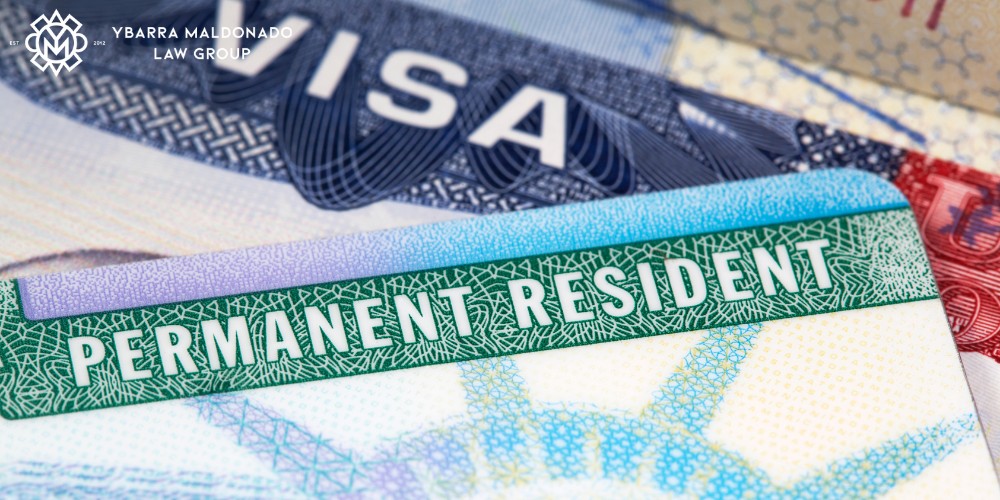L1 Visa for Investors
Unlocking Opportunities: A Comprehensive Overview to the L1 Visa Process
The L1 visa process offers a critical pathway for international firms seeking to transfer key employees across borders. Comprehending the subtleties of qualification requirements, the distinctions between L-1A and L-1B visas, and the details of the application procedure can significantly influence a candidate's success. Nonetheless, navigating this complex landscape is not without its challenges, and careful focus to documents and company sponsorship is crucial. As we discover the key elements of this procedure, the techniques for getting rid of potential challenges will certainly become apparent, exposing just how informed prep work can open a globe of chances.
Recognizing the L1 Visa
Comprehending the L1 visa entails recognizing its value as a vital device for international companies looking for to transfer proficient employees between global offices. This non-immigrant visa category assists in the activity of execs, managers, and specialized knowledge employees to the United States, thereby making it possible for organizations to preserve functional continuity and harness worldwide ability efficiently. The L1 visa is divided right into two key categories: L-1A for supervisors and executives, and L-1B for workers having specialized knowledge.The L1 visa offers an essential function in improving a firm's competitive side in the global marketplace - L1 Visa. By enabling companies to relocate their vital employees, organizations can assure that important tasks are taken care of by certified people that are currently aware of the company's culture and functional processes. This inner transfer device not only promotes expertise sharing but likewise advertises technology and collaboration across borders.Moreover, the L1 visa is usually favored for its reasonably straightforward application process compared to other visa classifications, as it permits double intent, allowing holders to pursue long-term residency while on a short-lived job visa. This feature makes the L1 visa particularly appealing for both employers and employees, as it improves the path for experienced experts to establish lasting residency in the United States
Eligibility Requirements
Qualification for the L1 visa rests on numerous crucial standards that ensure both the worker and the employer meet details certifications. This non-immigrant visa is designed for international companies to move workers from consular services to united state counterparts.Firstly, the employer has to be a certifying company, that includes a moms and dad company, branch, affiliate, or subsidiary of an U.S. service. The business has to have been doing service for at the very least one year both in the U.S. and abroad. This assures that the business has enough functional security and a legit presence.Secondly, the employee needs to hold a managerial, executive, or specialized knowledge placement. For L1A visas, the candidate needs to demonstrate managerial or executive qualifications, while L1B visas concentrate on specialized expertise pertaining to the organization's items, services, or processes. In addition, the employee should have helped the international entity for at the very least one continuous year within the last 3 years prior to their application.Lastly, the staff member's duty in the U.S. must align with their previous setting, ensuring that their skills and proficiency are leveraged for the business's advantage.
Sorts Of L1 Visas
The L1 visa group consists of two primary types made to help with the transfer of workers within international firms: the L1A visa for supervisors and execs, and the L1B visa for workers with specialized expertise. Each type offers unique purposes and has certain eligibility criteria.The L1A visa is customized for individuals that hold managerial or executive placements within a company. This visa makes it possible for top-level workers to transfer to a united state branch, subsidiary, or associate of the same organization. Candidates for the L1A visa should demonstrate that they have been used in a managerial or executive ability for at the very least one constant year within the past three years before their application. In addition, this visa uses a much longer duration of remain, at first granted for 3 years, with the possibility of extensions for approximately 7 years.In contrast, the L1B visa is intended for experts with specialized understanding pertaining to the company's products, solutions, or processes. To certify, applicants should confirm that their experience is important to the organization which they have helped at least one continuous year within the last three years in a role that required this specialized understanding. The L1B visa is initially given for 3 years, with extensions available for up to five years.Both visa types are essential for firms seeking to boost their international procedures by leveraging skilled personnel, thereby promoting technology and efficiency within the U.S. market.
Application Process
Steering through the L1 visa procedure involves numerous vital actions that need to be carefully followed to guarantee an effective result. The process starts with the united state company, that must first establish qualification by demonstrating a certifying connection with the international entity and validating that the staff member fulfills the particular needs for the L1 visa category being sought.Once qualification is validated, the company launches the process by submitting Type I-129, the Petition for a Nonimmigrant Worker, with the United State Citizenship and Migration Services (USCIS) This kind has to be come with by a detailed description of the work obligations to be done, the business framework of both the U.S. and foreign entities, and the employee's qualifications. It's essential to confirm that all details is exact and full, as omissions or mistakes can cause delays or denials.Upon authorization of the I-129 request, the next action entails the employee making an application for the L1 visa at an U.S. consular office or consular office in their home country. This stage requires the conclusion of Kind DS-160, the Online Nonimmigrant Visa, and arranging a meeting. During the interview, the applicant has to provide proof sustaining their certifications and the company's petition.After the visa is provided, the employee can get in the United States to operate in the assigned function. On the whole, mindful prep work and adherence to each step of the application procedure are crucial for an effective L1 visa end result.
Called for Documents

Crucial Forms Needed
Steering the L1 Visa process needs cautious interest to the essential forms and documentation needed for a successful application. The primary kind needed is the Type I-129, Petition for a Nonimmigrant Employee, which need to be completed and submitted by the united state company. This kind lays out the information of the work deal and the certifications of the worker looking for the L1 Visa.Alongside Kind I-129, the candidate check here will require to full Form I-539 if going along with member of the family are also making an application for visas. Furthermore, the company has to provide proof of the qualifying relationship in between the united state entity and the foreign entity, typically necessitating the submission of company records such as short articles of incorporation or financial statements.Moreover, it is necessary to include the L Category Supplement to Form I-129, which specifies the kind of L Visa being asked for-- either L-1A for supervisors and execs or L-1B for staff members with specialized knowledge. Finally, candidates must guarantee that all types are signed and dated properly, as incomplete submissions can result in hold-ups or denials. Properly putting together these crucial types lays the structure for a smoother L1 Visa process.

Sustaining Evidence Demands
Sustaining documents is important for an effective L1 Visa, as it validates the insurance claims made in the request. Candidates need to provide a range of files to demonstrate eligibility for the visa, which is classified into 2 main kinds: evidence of the qualifying relationship between the U.S. and international entities and proof of the candidate's qualifications.To establish the partnership, applicants must submit documents such as business organizational graphes, monetary statements, and evidence of possession. These files validate that the international company has a certifying relationship with the united state employer, whether as a moms and dad company, subsidiary, branch, or affiliate.For the applicant's certifications, essential files include a comprehensive employment letter from the foreign company, detailing the candidate's task title, tasks, and period of work. In addition, academic qualifications, such as levels and diplomas, must be given to show the candidate's knowledge in the relevant field.
Company Sponsorship Files

Usual Obstacles
Steering the L1 visa procedure provides a number of common difficulties that candidates ought to be mindful of. Key concerns commonly include stringent documents needs, prospective hold-ups in handling times, and the necessity for stringent legal conformity. Comprehending these obstacles can assist applicants much better prepare and mitigate dangers during their visa journey.
Documentation Requirements
The L1 visa procedure typically offers substantial difficulties associated with documentation requirements. Applicants have to provide extensive documents to develop qualification, which can result in complication and prospective delays. Trick records consist of evidence of a certifying relationship between the united state and international company, evidence of the candidate's work history, and comprehensive details regarding the task role in the U.S.One common challenge is gathering enough evidence to demonstrate the nature of the certifying connection. Companies frequently have a hard time to existing clear organizational charts or economic declarations that show the connection in between the entities. On top of that, making certain that letters of assistance from employers precisely mirror the applicant's task duties and qualifications is essential, as obscure summaries can result in denials.Another problem emerges from the requirement for in-depth task summaries that align with the L1 visa classifications. Applicants need to verbalize not only their current duty yet likewise their managerial or specific understanding duties plainly. This necessitates a detailed understanding of both the candidate's placement and the governing language used in L1 visa.
Processing Time Delays
Experiencing hold-ups in handling times is a common challenge faced by L1 visa applicants, commonly causing stress and unpredictability. Several variables add to these hold-ups, consisting of high application volumes, boosted examination of applications, and administrative stockpiles within the united state Citizenship and Immigration Solutions (USCIS) Candidates may discover that processing times can differ considerably depending on the service center managing their application, as each facility has its own workload and efficiency degrees. Additionally, the intricacy of the candidate's situation, such as the need for considerable documentation or explanation, can even more prolong wait times.In some circumstances, concerns connected to the candidate's current migration status or previous visa history may also cause additional delays, as USCIS might require further testimonial or information. It is crucial for prospects to remain positive throughout this duration, maintaining open interaction with their companies and lawful representatives to address any type of potential problems promptly.Understanding these processing time challenges can assist L1 visa applicants plan for possible hold-ups and alleviate the effect on their shift and occupation plans. Persistence and persistance are essential virtues in maneuvering this elaborate process.
Lawful Compliance Issues
Many L1 visa candidates come across lawful compliance concerns that can complicate their journey toward acquiring the visa. Recognizing and adhering to the particular guidelines established by the U.S. Citizenship and Migration Services (USCIS) is crucial. Common challenges include showing the qualifying partnership in between the international and united state employers, as well as verifying that the candidate possesses the requisite specific knowledge or managerial capacity.Additionally, applicants have to supply complete documents outlining their work tasks, company framework, and financial stability of the U.S. entity. Insufficient or inaccurate documentation can lead to hold-ups or also denials. Employers have to also ensure that they abide with labor legislations, consisting of wage and working condition standards, which can influence visa eligibility.Another typical issue includes keeping compliance with the regards to the visa once approved. Adjustments in employment condition, task duties, or company framework can necessitate amendments to the visa, which if not addressed quickly can bring about lawful complications. As an outcome, remaining informed concerning conformity requirements and looking for legal advise when necessary is crucial to navigate the complexities of the L1 visa process effectively.
Tips for Success
Success in the L1 visa process usually depends upon thorough preparation and focus to information. To improve your opportunities of authorization, begin by thoroughly comprehending the eligibility demands for both the L1A and L1B visa groups. Examine whether your position at the company qualifies as supervisory, executive, or specialized understanding, as this classification especially affects your application.Next, collect comprehensive documents that confirms your cases. This includes organizational charts, comprehensive job summaries, and proof of the business's operational structure. Clear and concise evidence of the qualifying partnership between the united state entity and the foreign entity is important. Confirm that all documents are arranged practically and presented in a professional fashion, as this reflects your commitment and severity concerning the application.Engage the services of a knowledgeable migration lawyer that specializes in L1 visas. Their proficiency can confirm important, directing you via facility guidelines and guaranteeing that all documentation abides by present legislations. In addition, prepare for the meeting by practicing solution to common questions and being prepared to discuss your role and contributions to the firm detailed.
Frequently Asked Inquiries
Can Family Members Members Accompany the L1 Visa Owner?
Yes, member of the family of L1 visa holders, consisting of spouses and single kids under 21, can go along with the primary visa holder. They may likewise get L2 visas, which allow them to reside in the USA.
How Much Time Can I Keep on an L1 Visa?
The L1 visa allows first remains of approximately 3 years, with the opportunity of extension. L1A visa owners might remain for an optimum of 7 years, while L1B visa owners can continue to be for 5 years.
Can L1 Visa Holders Make An Application For a Permit?
Yes, L1 visa holders can get a permit. L1 Visa Requirements. They may seek permanent residency via employment-based categories, typically needing sponsorship from their employer, provided they meet the essential certifications and documentation requirements
What Occurs if My L1 Visa Is Rejected?
If your L1 visa is refuted, you may receive a notice outlining the reasons for rejection. You can look for to appeal the choice, reapply, or discover different visa options based on your scenarios.
Are There Any Type Of Travel Restrictions With an L1 Visa?
An L1 visa usually enables global travel; however, re-entry to the U. L1 Visa.S. is contingent upon preserving valid standing. Travelers must assure conformity with visa problems to stay clear of difficulties upon return
Final thought
